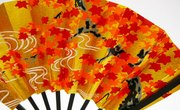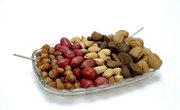What is a Celery Vase?
Even though celery is a low-cost vegetable common in grocery stores, it has a lofty history in the United States. During the Victorian era (or the Victorian age), wealthy families regarded celery as a luxurious treat. They kept stalks of the vegetable in intricately cut glass vases filled with water as a way to serve in-between meal snacks. Today, fine-arts museums display celery vases as works of American decorative art glass.
Glass celery vases are most common from these examples, but other celery dish options were also available for those of middle class and lower class backgrounds. Atlas Obscura even has some celery glass history for those interested, and Etsy can even be used to find celery vases in modern times. The Steward’s Handbook and Guide to Party Catering still offers celery vases in some of their references, as tableware and antique styles make a comeback in modern times, a large result from social media coverage and sharing.
Pressed Glass History
During the early part of the 19th century, glass manufacturing underwent a revolution. Previously, artisans used blowpipes to create glassware, but technological advances led to the development of pressed glass, a technique that shapes molten glass using a plunger. By 1850, glass companies and manufacturers began producing pressed glass in mass quantities and perfecting decorative patterns in glassware such as celery vases. Some of the most famous manufacturers of celery vases, including Fostoria, had their headquarters in Fostoria, Ohio.
The Vase's Purpose
From the 1830s to the early 1900s, celery was a rare and expensive vegetable that required a lot of care to cultivate. Cooks cleaned and scraped raw stalks, then put them in cold water in tall glass vases. This style of preparation and presentation in expensive celery vases was a symbol of prestige and confirmed a family’s upper-class status. Cookbooks started including more celery options in their recipes as a result of its view in society.
Simple to Elaborate Features
The design of celery vases ranges from simple styles to elaborate decorations resembling flowers with scalloped or fluted edges. The bases of the vases feature cut designs such as stars or other shapes. The pressed-glass designs on the body of vases include elaborate patterns, intricate geometric shapes, beaded swirls, landscapes scenes and nature motifs. Some vases are made of colored, frosted glass. Some custom-made vases have the names of their owners etched into the base. Even when the vases had no celery in them, owners used them as table centerpieces and to hold flowers, like a flower vase, as most were around 10 inches tall in the late 19th century. Some celery vases even resembled unique designs from Mediterranean styles.
The Vase's Decline
Production of celery vases subsided by the beginning of the 20th century as the presentation style of celery changed to serving the vegetable on flat dishes. The prestige of owning celery vases declined as manufacturers began to mass produce the objects. Agricultural advances leading to easier-to-grow varieties of celery also made the vegetable less prestigious. Today, fine-arts museums and galleries display antique celery vases as works of American decorative art that give a glimpse into the lives of the well-to-do during the Victorian age. Antique shops, auction houses and specialty glass dealers also catalog and sell celery vases.
Related Articles
References
- Smithsonian Institution: History Wired: Celery Vase
- Metropolitan Museum of Art: Celery Vase Attributed to Boston & Sandwich Glass Company (1825–1888)
- Five Colleges and Historic Deerfield Museum Consortium: American Celery Vase
- Fosteria, Ohio Glass Association
- WorthPoint: The Celery Vase: A Prominent Way to Serve an Exotic Vegetable
- Sean George Pressed Glass and Goblets: A Brief History of Antique Pressed Glass
- Metropolitan Museum of Art: Celery Vase Search
- Yale University Art Gallery: Discover Yale Digital Content: Celery Vase
Resources
Writer Bio
Lauren Miller has more than 10 years of experience as a writer and editor. Her articles on technology, small business and legal topics have appeared in magazines, newspapers and trade journals. She has a Bachelor of Arts in philosophy and is an avid gardener and sports fan.










